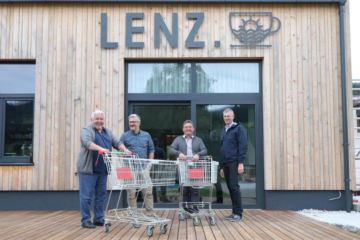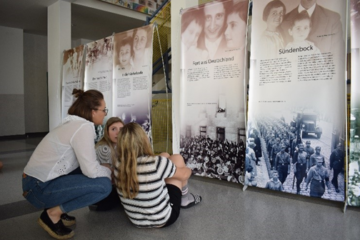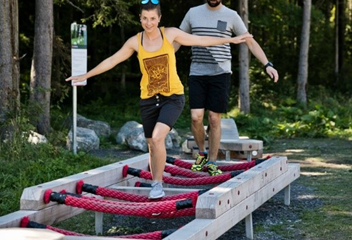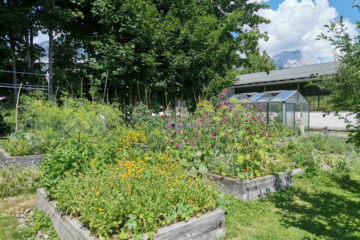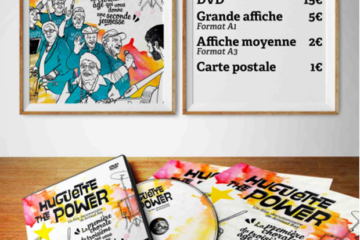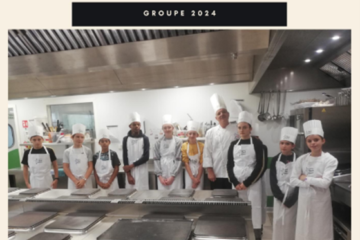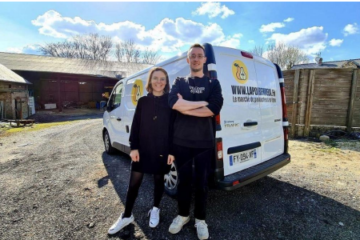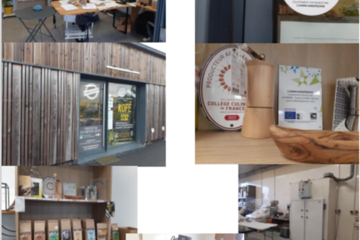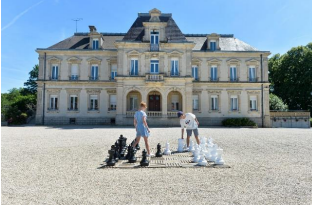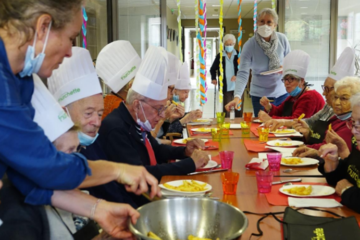Austria
Introduction
In the municipality of Gaflenz, a unique local supplier (primary care) has emerged in the form of a hybrid market (with specific focus on local and regional products with a share of 35% on assortment) in the town center. Hybrid market means, that there is personal service and self service temporary (focus on off peak times)!
The project concept goes far beyond classic retail, as a combination of different services has been created (Café, public outdoor pool buffet, shopping outside opening hours, postal service, paper good store)
By means of a citizens’ cooperative, the project is supported in a long-term and diverse way oriented on smart village aspects (financing among others by crowdfunding, form of operation -cooperative, member loyalty, stimulation of village center, create a social meeting point within the community, using infrastructure synergies – parking spot, supply infrastructure).
Presentation of the project
The project is located in the center of a small village in the South of Upper Austria, which is called “Gaflenz”. In this location life about 2000 inhabitants. It´s a real rural area und the village is famous for it´s lively voluntary club life. So, the main challenges are the handling of generally emigration tendencies, to keep a high life quality in the village, to motivate citizens to engage and especially to maintain local food supply and self-sufficiency.
in Upper Austria.
As it occurs that the last local supplier within the village tended to close down his business, the village community got active. They decided to prolong the local supply with regional groceries and products of everyday use, because they wanted to keep life quality in the community. Therefore, they founded a local cooperative to run the initiative, to create identity and longterm participation as well as future frequency for the coming local supply business. Another advantage of this strong local cooperative has been the possibility und the need to gain financial support to get over high investment in project. After forming this cooperative community they realized a huge exertion in planning, experience exchange, raise money, discussion/coordination and finally implementation of an very innovative format of local supply.
Objectives
- Maintaining/increasing the quality of life in Gaflenz (future investment) by increasing the attractiveness of the place as a residential, economic, recreational and living space
- Maintaining/improving the quality of local supplies in the community of Gaflenz (infrastructure, range, availability of regional products) with special focus on target groups (elderly people, young people, full time workers, especially women) by accessibility round the clock and localization of shop in the village center
- revitalizing the town center and creating a social meeting place in Gaflenz (social cohesion, identity) and bundling infrastructure to use synergies and minimize soil/space consumption
- Raising awareness of local suppliers, strengthening personal responsibility, retaining purchasing power in the local area and creating new/expanded income opportunities for local/surrounding (small) farmers and thus contributing to maintaining jobs or farms as a whole in the region
Actual or expected outputs
- realization of an innovative local supply store (size -200m² and additionally 100 m² of store; not included in LEADER but also built – 70 m² of bistro with 70 m² of integrated terrace). It offers a broad range of different products (foods as well as everday need with a share of at least 35% from local provenance and an unpacked station) and it operates as a hybride store (entrance and identification with credit card, self-service times on weekends and off -peak times, surveillance system, self-service scanner and payment system)
- at the moment citizens cooperative is holding x members an it is still growing, they managed to contribute an amount of € 75.000,- for investment
- shop frequency is satisfactory und business runs economically
- LENZ has established as a working village center meeting point
LEADER has been a crucial factor of success within the project. Not only by giving financial support to the project owner, but also act as a coordination point/network to guarantee exchange of experiencies between best practice examples, give important thematic impulses and to be a reliable companion (financing, project management, …). Nevertheless – LEADER was an important aspect to increase quality und success within the project, as the project selection commitee demanded to run an « Agenda 21 process » just before starting the project to enhance community support.
Emblematic character of the project
Why is this project a priority for LEADER in your strategy?
The project « Lenz » is one of our showcase projects wihin LEADER initiative, because it supports our efforts to strengthen lifequality und citizen engagement (smart village approach) in the region in an innovative way (in the sense of technical, organizational and social innovation). Another strong objective within our LEADER region is to ensure local supply service as broad as possible in Nationalpark Kalkalpen area. So « Lenz Project » is one in a row of many new an fascinating formates in the local supply approach, which occured in the last period.
The project addressed these challenges by building a strong community and created a new, innovative formate of local supply.
Many other regions and initiatives has already gained informations and expériences from the project (excursions, lectures, experience exchange…) ! They are still ready to passa long informations an to give impulses to other initiatives !
Pictures


Bürgergenossenschaft Genial-Regional-Gaflenztal eGenCooperative
Leader Region Nationalpark OÖ Kalkalpen
Austria
